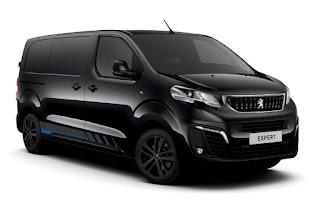GTI or vRS or Cupra?
The new Volkswagen Polo GTI, Skoda Fabia vRS and Seat Ibiza SC Cupra.
All have a 176 bhp (180 PS / 132 kW) 1.4 litre petrol engine that’s both turbocharged and supercharged, all come with a seven-speed DSG dual-clutch gearbox, all will accelerate from 0-62 mph (100 km/h) in about seven seconds, all have a top speed of around 140 mph (225 km/h), and all are based on the same platform.
So then, essentially the same cars. Except when it comes to price.
Perhaps unsurprisingly the Skoda is the cheapest, with a UK on the road price of £15,700 for the five-door hatch or £16,495 for the estate. Next up is the Seat, available only as a three-door at £16,545. Then comes the Volkswagen, which costs £18,275 for the three-door or £18,875 for the five-door.
Now, the Fabia may only have manual air conditioning, as opposed to the climate control that’s fitted as standard to the Ibiza and Polo, and its rear windows must be manually wound up and down. But otherwise all three cars have pretty much the same specification, which includes traction control, XDS electronic differential lock, sports seats and 17” alloy wheels.
The obvious question is why would anyone in their right mind pay the not insignificant £3,175 extra for the five-door version of the Volkswagen, instead of buying the Skoda? That’s a premium of over 20%.
Is it down to badge snobbery, or a vain fear of what others may think of Fabia drivers? Anyone who still believes there’s anything wrong with either the Skoda brand or its products is at least fifteen years behind the times, so their opinion shouldn’t really count for much anyway.
To prove that particular point, Skoda recently won the Best Car Manufacturer Award from UK consumer magazine ‘Which?’. The marque achieved 89% as a customer score, 79% for the quality of its dealerships, 81% for dealer service and 79% for reliability of cars up to eight years old. By contrast, its Audi, Volkswagen, and Seat sister brands didn’t even make the shortlist.
All have a 176 bhp (180 PS / 132 kW) 1.4 litre petrol engine that’s both turbocharged and supercharged, all come with a seven-speed DSG dual-clutch gearbox, all will accelerate from 0-62 mph (100 km/h) in about seven seconds, all have a top speed of around 140 mph (225 km/h), and all are based on the same platform.
So then, essentially the same cars. Except when it comes to price.
Perhaps unsurprisingly the Skoda is the cheapest, with a UK on the road price of £15,700 for the five-door hatch or £16,495 for the estate. Next up is the Seat, available only as a three-door at £16,545. Then comes the Volkswagen, which costs £18,275 for the three-door or £18,875 for the five-door.
Now, the Fabia may only have manual air conditioning, as opposed to the climate control that’s fitted as standard to the Ibiza and Polo, and its rear windows must be manually wound up and down. But otherwise all three cars have pretty much the same specification, which includes traction control, XDS electronic differential lock, sports seats and 17” alloy wheels.
The obvious question is why would anyone in their right mind pay the not insignificant £3,175 extra for the five-door version of the Volkswagen, instead of buying the Skoda? That’s a premium of over 20%.
Is it down to badge snobbery, or a vain fear of what others may think of Fabia drivers? Anyone who still believes there’s anything wrong with either the Skoda brand or its products is at least fifteen years behind the times, so their opinion shouldn’t really count for much anyway.
To prove that particular point, Skoda recently won the Best Car Manufacturer Award from UK consumer magazine ‘Which?’. The marque achieved 89% as a customer score, 79% for the quality of its dealerships, 81% for dealer service and 79% for reliability of cars up to eight years old. By contrast, its Audi, Volkswagen, and Seat sister brands didn’t even make the shortlist.














Comments
Post a Comment